|
Books Should Be Free Loyal Books Free Public Domain Audiobooks & eBook Downloads |
|
|
Books Should Be Free Loyal Books Free Public Domain Audiobooks & eBook Downloads |
|
Top Authors |
|---|
|
Book type:
Sort by:
|
By: Zane Grey (1872-1939) | |
|---|---|
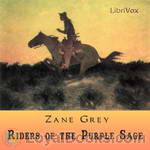 Riders of the Purple Sage
Riders of the Purple Sage
Dubbed the “most popular Western of all times” Zane Grey's Riders of the Purple Sage was the benchmark by which every other novel in the “Western” genre came to be judged. It portrays the archetypal lone gun slinger, out to wreak revenge for past wrongs who falls foul of the rich and powerful and finally rides away into the sunset, having rid the town of poisonous villains! Riders of the Purple Sage is set in 1871, in a remote part of Utah. It opens with the young and lovely Jane Withersteen being victimized and harassed by her Mormon Church elders for associating with Gentiles or Non-Mormons... | |
 The Lone Star Ranger
The Lone Star Ranger
Post-Civil War Texas, the Lone Star state. Buck Duane is a man who was almost born holding a gun in his hand. His father was an infamous outlaw and the young child grew up witnessing scenes of violence and betrayal. When he himself inadvertently kills a man, he is forced to go into hiding and must live with the very men he despises. However, the love of a beautiful young woman is his redemption. He joins the Texas Rangers and helps to rid the state of notorious criminals, hoping to exchange this for his good name and freedom... | |
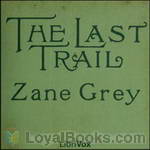 The Last Trail
The Last Trail
Return with us to those thrilling days of yesteryear as Mike Vendetti narrates this early Zane Grey novel of hardy pioneers taming the wild west. Yes, despite the difficult times, romance flourishes and the bad guys are eliminated almost single handedly as our heroes Jonathan Zane and his sidekick Lew “Deathwind” Wetzel fight their way through mud, blood, gore, savage Indians, and despicable outlaws, to make the land safe for pioneer families as they settle the wild west. | |
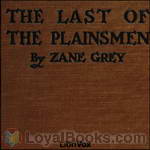 The Last of the Plainsmen
The Last of the Plainsmen
Travel along as Mike Vendetti aka miketheauctioneer narrates an outstanding true account of a trip made in 1909 by Zane Grey and a plainsman, Buffalo Jones, through the Grand Canyon to lasso a cougar. That’s right lasso. Throw a rope around. That’s equivalent to catching one by the tail. As I narrated this book, I found fact to be as exciting as fiction. This part of the west was relatively wild and untamed at this time. Wolves, wild horses, buffalo and other wildlife were quite prevalent, and the Indians were not that friendly... | |
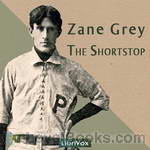 The Shortstop
The Shortstop
Zane Grey (Pearl Zane Gray) born in 1872 in Zanesville, Ohio was best known for his western stories, most notably Riders Of The Purple Sage which has been filmed four times, the last in 1996 starring Ed Harris and Amy Madigan. Among his other interests was baseball. He attended the University of Pennsylvania on a baseball scholarship where he earned a degree in dentistry. Grey later played minor league baseball with a team in Wheeling, West Virginia. According to the Internet Movie Data Base he is credited with 110 films made from his stories and books... | |
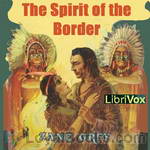 The Spirit of the Border
The Spirit of the Border
This is an early novel by the phenomenally successful author of frontier, western and sports stories. It deals with historical characters and incidents in the Ohio Valley in the late 18th century, especially with the foundation of Gnaddenhutten, a missionary village intended to bring Christianity to the Indians of Ohio, despite the violent opposition of both Indians and white renegades. This turbulent adventure romance features the heroics of a semi-legendary frontiersman, Lewis Wetzel, who attempts to protect the settlers from hostile Native Americans and the vicious white outlaws the Girty brothers. (Introduction by Leonard Wilson) | |
 Call Of The Canyon
Call Of The Canyon
Glenn Kilbourne returns from the war and travels to Arizona to regain his health. There he is nursed back to health by an Arizona girl, Flo Hutter Kilbourne's fiancée, Carley Burch arrives in Arizona but soon becomes disillusioned with life in the West and returns to New York. Carley soon learns that life in the Big City is not what she really wants. Should she return to Arizaona? Will Glen still love Her? Not only a great love story, Grey, as usual, describes the environment in all its glory. | |
 Rustlers of Pecos County
Rustlers of Pecos County
The town of Linrock, located in Pecos Couty is south Texas has fallen under the control of a gang of rustlers. Two Texas Lone Star Rangers are sent to Linrock to clean up the town .They soon fall in love with two girls who may be related to the leader of the gang of rustlers.There seems to be no good choice for these two dedicated lawmen. | |
 Rainbow Trail
Rainbow Trail
The Rainbow Trail is a sequel to The Riders of the Purple Sage. Both novels are notable for their protagonists' mild opposition to Mormon polygamy, but in The Rainbow Trail this theme is treated more explicitly. The plots of both books revolve around the victimization of women in the Mormon culture: events in Riders of the Purple Sage are centered on the struggle of a Mormon woman who sacrifices her wealth and social status to avoid becoming a junior wife of the head of a local church, while The Rainbow Trail contrasts the older Mormons with the rising generation of Mormon women who will not tolerate polygamy and Mormon men who do not seek it. | |
By: Howard Pyle (1853-1911) | |
|---|---|
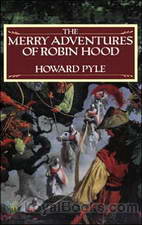 The Merry Adventures of Robin Hood
The Merry Adventures of Robin Hood
A modern day legend, Robin Hood is an archetypal hero of the common people who goes to great lengths to famously take from the rich and give to the poor. Luckily he is not alone in his mission, as his righteous views are shared by his band of Merry Men, a group of yeomen, and together they pursue an end to injustice and oppression. Set in medieval England, the tale begins with the introduction of a young archer, who is provoked into conflict and committing a crime against the formidable Sherriff of Nottingham and is immediately dubbed an outlaw... | |
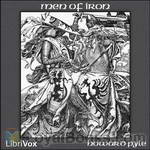 Men of Iron
Men of Iron
Men of Iron by Howard Pyle is historical fiction that transports us back to the 1400’s, a time of knighthood and chivalry. Myles Falworth is eight years old when news comes they must flee their home. His blind father is accused of treason. We see Myles grow up, train as a knight, and with perseverance, clear his father of any wrong-doing and restore their family name. | |
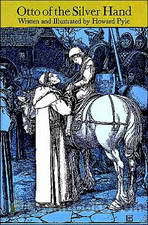 Otto of the Silver Hand
Otto of the Silver Hand
The story of little Otto, a gentle, peace-loving child born into the heart of turmoil and strife in the castle of a feuding robber baron in medieval Germany. (Summary by Arctura) | |
 Howard Pyle's Book of Pirates
Howard Pyle's Book of Pirates
Swashbuckling tales of legendary pirates, buccaneers, and marooners, terrors of the Spanish Main. | |
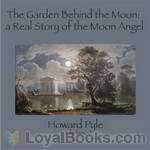 The Garden Behind the Moon: A Real Story of the Moon Angel
The Garden Behind the Moon: A Real Story of the Moon Angel
David goes on a journey to the moon-garden where everything is beautiful and where he also meets Phyllis who is not like the other children in the garden. While he is allowed to play in this beautiful place for awhile, he at last finds out that he has been brought there to reveal his true mission, which is to find the Wonder-Box and the Know-All Book that is hidden in the Iron Castle and bring them back to earth. In order to find the Iron Castle, he must first find and tame the Black Winged Horse. Will he be able to succeed at the task given him? (Summary by Laura Victoria) | |
By: Andrew Lang (1844-1912) | |
|---|---|
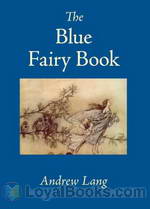 The Blue Fairy Book
The Blue Fairy Book
Published in 1889, The Blue Fairy Book is the first book in the series of story collections known as Andrew Lang's “Coloured” Fairy Books, which bring to life the classic fairytales by Grimm, Madame d'Aulnoy and Perrault among other folklore sources. Most captivating is the fact that the collection features the stories in pristine an unaltered conditions, therefore they contain a darker side than the polished versions most are familiar with from childhood memories. Featuring 37 tales, The... | |
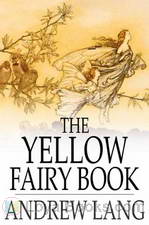 The Yellow Fairy Book
The Yellow Fairy Book
Published in 1894, The Yellow Fairy Book is the fourth installment in the series of fairytale collections known as Andrew Lang's “Coloured” Fairy Books and is comprised of stories collected from various foreign language sources including French, German, English, Scottish, Russian, and Polish. Moreover, the tales not only intend to entertain, but also offer an underlying didactic purpose, as many of the stories place an important emphasis on righteous behavior. Featuring 48 stories, The Yellow... | |
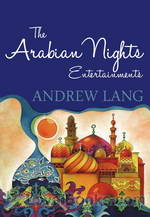 The Arabian Nights
The Arabian Nights
The Arabian Nights is a collection of Perso-Arabic folk tales and other stories. The collection, or at least certain stories drawn from it (or purporting to be drawn from it), became widely known in the West from the 18th century, after it was translated from the Arabic — first into French and then into English and other European languages. The first English language edition, based on Galland’s French rather than the original Arabic, rendered the title as The Arabian Nights’ Entertainment – and this, or simply The Arabian Nights, has been the title by which it has been best known to English-speaking people ever since. | |
 A Short History of Scotland
A Short History of Scotland
A Short History of Scotland is a consise introduction to the history of Scotland from Roman times to the last Jacobite rebellion, written by the author of a much longer Scottish history. | |
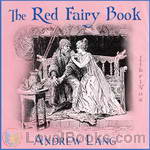 The Red Fairy Book
The Red Fairy Book
The Red Fairy Book is the second in a series of twelve books known as Andrew Lang’s Fairy Books or Andrew Lang’s “Coloured” Books. The series was immensely popular and proved of great influence in children’s literature, increasing the popularity of fairy tales over tales of real life. | |
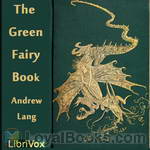 The Green Fairy Book
The Green Fairy Book
Andrew Lang's Fairy Books or Andrew Lang's "Coloured" Fairy Books constitute a twelve-book series of fairy tale collections. Although Andrew Lang did not collect the stories himself from the oral tradition, the extent of his sources, who had collected them originally (with the notable exception of Madame d'Aulnoy), made them an immensely influential collection, especially as he used foreign-language sources, giving many of these tales their first appearance in English. As acknowledged in the prefaces, although Lang himself made most of the selections, his wife and other translators did a large portion of the translating and telling of the actual stories... | |
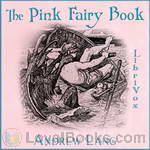 The Pink Fairy Book
The Pink Fairy Book
All people in the world tell nursery tales to their children, and the stories are apt to be like each other everywhere. A child who has read the Blue and Red and Yellow Fairy Books will find some old friends with new faces in the Pink Fairy Book. Courage, youth, beauty, kindness, have many trials, but they always win the battle; while witches, giants, unfriendly cruel people, are on the losing hand. So it ought to be, and so, on the whole, it is and will be; and that is all the moral of fairy tales... | |
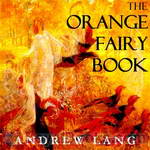 The Orange Fairy Book
The Orange Fairy Book
Andrew Lang's Fairy Books or Andrew Lang's "Coloured" Fairy Books constitute a twelve-book series of fairy tale collections. Although Andrew Lang did not collect the stories himself from the oral tradition, the extent of his sources, who had collected them originally (with the notable exception of Madame d'Aulnoy), made them an immensely influential collection, especially as he used foreign-language sources, giving many of these tales their first appearance in English. As acknowledged in the prefaces, although Lang himself made most of the selections, his wife and other translators did a large portion of the translating and telling of the actual stories... | |
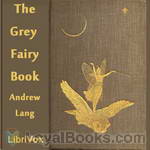 The Grey Fairy Book
The Grey Fairy Book
The tales in the Grey Fairy Book are derived from many countries—Lithuania, various parts of Africa, Germany, France, Greece, and other regions of the world. They have been translated and adapted by Mrs. Dent, Mrs. Lang, Miss Eleanor Sellar, Miss Blackley, and Miss hang. 'The Three Sons of Hali' is from the last century 'Cabinet des Fees,' a very large collection. The French author may have had some Oriental original before him in parts; at all events he copied the Eastern method of putting tale within tale, like the Eastern balls of carved ivory... | |
 HE
HE
This book is a parody of the famous swashbuckling novel, She, by H. Rider Haggard. Her beauties are beyond the reach of danger from Burlesque, nor does her form flit across our humble pages.” (taken from the Dedication) | |
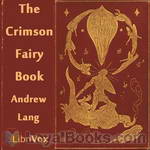 The Crimson Fairy Book
The Crimson Fairy Book
The Crimson Fairy Book contains thirty-six stories collected from around the world and edited by Andrew Lang. Many tales in this book are translated, or adapted, from those told by mothers and nurses in Hungary; others are familiar to Russian nurseries; the Servians are responsible for some; a rather peculiarly fanciful set of stories are adapted from the Roumanians; others are from the Baltic shores; others from sunny Sicily; a few are from Finland, and Iceland, and Japan, and Tunis, and Portugal... | |
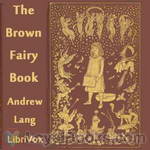 The Brown Fairy Book
The Brown Fairy Book
Andrew Lang’s Brown Fairy Book (1904) was a beautifully produced and illustrated edition of fairy tales that has become a classic. This was one of many other collections of fairy tales, collectively known as Andrew Lang’s Fairy Books. | |
 Violet Fairy Book
Violet Fairy Book
Andrew Lang’s Violet Fairy Book (1901) was a beautifully produced and illustrated edition of fairy tales that has become a classic. This was one of many other collections of fairy tales, collectively known as Andrew Lang’s Fairy Books. | |
 Tales of Troy: Ulysses the Sacker of Cities
Tales of Troy: Ulysses the Sacker of Cities
These are short stories about the life of Ulysses, the stealing of Helen, Paris, battles, Trojan horses, and more! | |
By: R. F. Murray (1863-1894) | |
|---|---|
 Wasted Day
Wasted Day
Robert Fuller Murray was a Victorian poet. Although born in the United States, Murray lived most of his life in the United Kingdom, most notably in St Andrews, Scotland. He wrote two books of poetry and was published occasionally in periodicals. | |
By: Andrew Lang | |
|---|---|
 Custom and Myth
Custom and Myth
CUSTOM AND MYTHINTRODUCTION.Though some of the essays in this volume have appeared in various serials, the majority of them were written expressly for their present purpose, and they are now arranged in a designed order. During some years of study of Greek, Indian, and savage mythologies, I have become more and more impressed with a sense of the inadequacy of the prevalent method of comparative mythology. That method is based on the belief that myths are the result of a disease of language, as the pearl is the result of a disease of the oyster... | |
By: René Descartes (1596-1650) | |
|---|---|
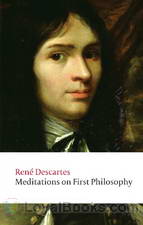 Meditations on First Philosophy
Meditations on First Philosophy
The foundations of modern skepticism and objective thinking are thought to be rooted in the philosophy of Rene Descartes, the French mathematician, philosopher and writer. This great sixteenth century thinker also gave us theories on mind-body dualism and the concept of ethics as the highest form of science. He is considered the Father of Modern Western Philosophy. His theories also led to the emancipation of humanity from the doctrine that the Church is the sole authority over Man and led to a more autonomous idea of the human condition... | |
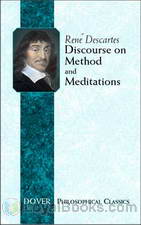 Discourse on the Method of Rightly Conducting One's Reason and of Seeking Truth in the Sciences
Discourse on the Method of Rightly Conducting One's Reason and of Seeking Truth in the Sciences
The Discourse on Method is best known as the source of the famous quotation “cogito ergo sum”, “I think, therefore I am.” …. It is a method which gives a solid platform from which all modern natural sciences could evolve. With this work, the idea of skepticism was revived from the ancients such as Sextus Empiricus and modified to account for a truth that Descartes found to be incontrovertible. Descartes started his line of reasoning by doubting everything, so as to assess the world from a fresh perspective, clear of any preconceived notions. | |
By: Washington Irving (1783-1859) | |
|---|---|
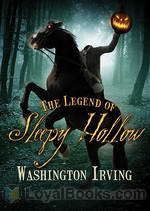 The Legend of Sleepy Hollow
The Legend of Sleepy Hollow
Set in the small secluded valley of Sleepy Hollow, Irving’s short speculative story follows the rivalry between Ichabod Crane and Brom Van Brunt for Katrina Van Tassel’s hand in marriage. Mostly inhabited by descendants from Dutch settlers, the residents are known for their belief in superstitions and the supernatural, and have many stories to suffice their colorful imaginations. The story begins when the scrawny schoolmaster Ichabod Crane from Connecticut moves to Sleepy Hollow for a teaching job and rotates living with the families of his students... | |
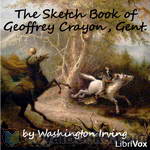 The Sketch Book of Geoffrey Crayon, Gent.
The Sketch Book of Geoffrey Crayon, Gent.
Apart from "Rip Van Winkle" and "The Legend of Sleepy Hollow" - the pieces which made both Irving and The Sketch Book famous - other tales include "Roscoe", "The Broken Heart", "The Art of Book-making", "A Royal Poet", "The Spectre Bridegroom", "Westminster Abbey", "Little Britain", and "John Bull". His stories were highly influenced by German folktales, with "The Legend of Sleepy Hollow" being inspired by a folktale recorded by Karl Musaus. Stories range from the maudlin (such as "The Wife" and... | |
 Old Christmas: From the Sketch Book of Washington Irving
Old Christmas: From the Sketch Book of Washington Irving
Washington Irving's Old Christmas tells of an American's travels through England during the Christmas season. Through a chance meeting with an old friend he is able to experience Christmas in a stately manor house. Through his eyes as a houseguest he glimpses the uniquely British customs and celebrations of Christmas as it would have been experienced during the Middle Ages, rather than in the early 19th century. | |
 Knickerbocker's History of New York, Vol. 1
Knickerbocker's History of New York, Vol. 1
Washington Irving, an author, biographer, historian, and diplomat, completed his first major work, a satire of contemporary local history and politics entitled A History of New-York from the Beginning of the World to the End of the Dutch Dynasty, by Diedrich Knickerbocker in 1809. Prior to its publication, Irving started a promotional hoax (not unlike some modern-day publicity stunts?) by placing fake missing persons advertisements in local newspapers asking for help in locating Diedrich Knickerbocker... | |
By: Franz Kafka (1883-1924) | |
|---|---|
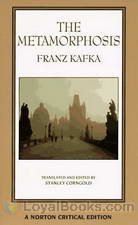 The Metamorphosis
The Metamorphosis
“One morning Gregor Samsa woke from anxious dreams to find himself transformed into a disgusting insect...” Thus opens one of the most famous books of the twentieth century, The Metamorphosis by Franz Kafka. Published in 1915, The Metamorphosis is written originally in German. It is a brief but extremely thought provoking novella. Readers and writers have termed it one of the most influential works of the century and hailed Kafka as the creator of a new form in literary tradition. Today, the book has been studied, analyzed and researched extensively by teachers, students and psychologists... | |
By: Robert Frost (1874-1963) | |
|---|---|
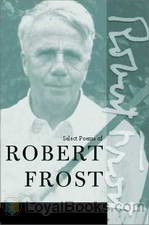 Selected Poems
Selected Poems
“Good fences make good neighbors...” If, as a reader, this is one line you do remember, then the poet Robert Frost would have fulfilled his purpose. The highest goal of a poet, he claimed, was to “lodge a few poems where they would be hard to get rid of...” Unforgettable lines and indelible memories are connected with our encounters with America's best-loved and most popular poet. His wonderful pictures of rural life and the deeply philosophical insights they offer remain with us long after many others have faded... | |
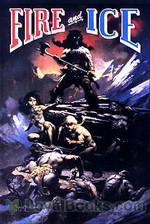 Fire and Ice
Fire and Ice
Written by one of the most significant American poets, Fire and Ice proficiently tackles the continuous query about how the world will cease to exist, whether it will go up in flames, or succumb to the cruelty of ice. First published in Harper’s Magazine in 1920 and later included in his acclaimed anthology New Hampshire, Frost effectively employs the use of simple, yet evocative language that assigns each syllable a significant purpose in the poem, while simultaneously concentrating on a perplexing topic... | |
 North of Boston
North of Boston
One of the first collections of poetry by Robert Frost, published in 1914.The Fear (00:00:16)The Self-seeker (00:05:27)The Wood-pile (00:16:35)Good Hours (00:18:47) | |
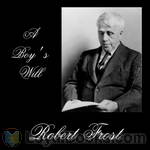 A Boy's Will
A Boy's Will
Robert Frost preferred to describe the New England countryside using everyday language. He used both as tools to explore world views and life philosophies. A Boy's Will was his first poetry anthology. | |
By: Victor Appleton (1873-1962) | |
|---|---|
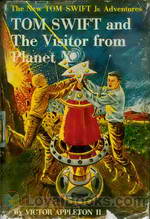 Tom Swift and the Visitor From Planet X
Tom Swift and the Visitor From Planet X
If you haven't come across the 200-book series about Tom Swift Jr, this book would be an interesting one to start with. The series is aimed at the young adult readership, probably male, and the young adolescent hero, Tom Swift Jr is the son of Tom Swift Sr. The books portray the perennially 18-year-old Tom, a tall and angular youngster, possessed of a very high intelligence and presence of mind. Regular characters include his parents, younger sister Sandy, best buddy Bud Barclay, his regular date Phyllis Newton, and the comic roly-poly Chow Winkler... | |
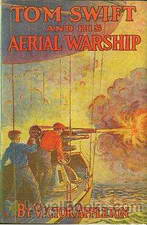 Tom Swift and His Aerial Warship, or, the Naval Terror of the Seas
Tom Swift and His Aerial Warship, or, the Naval Terror of the Seas
Tom Swift is an inventor, and these are his adventures. The locale is the little town of Shopton in upstateNew York, near Lake Carlopa. While some of Tom’s inventions are not well-founded in a scientific sense, others elaborated developments in the news and in popular magazines aimed at young science and invention enthusiasts. Presenting themselves as a forecast of future possibilities, they now and then hit close to the mark. Some predicted inventions that came true include “photo telephones”, vertical takeoff aircraft, aerial warships, giant cannons, and “wizard” cameras... | |
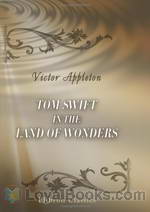 Tom Swift in the Land of Wonders
Tom Swift in the Land of Wonders
Tom Swift is the young protagonist in a series of juvenile adventure novels which began in the early twentieth century and continue to the present. Tom Swift is a genius inventor whose breakthroughs in technology (especially transport technology) drive the plots of the novels, placing them in a genre sometimes called “invention fiction” or “Edisonade”. This book is the 20th in the original series published from 1910 -1942, written by a ghost writer using the name of Victor Appleton. This adventure takes Tom and his cohorts to Honduras in search of a Mayan idol of gold. | |
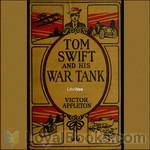 Tom Swift and His War Tank
Tom Swift and His War Tank
Tom Swift, that prolific youthful inventor, is engaged in trying to help the Allies win WWI. After reading newspaper accounts of the British tanks, Tom takes a sheet of paper and sets out to design a better one from scratch. And fortunately, he can throw the whole family business behind his venture. He has two problems: First, his friends and acquaintances are questioning his patriotism because he hasn’t enlisted as a rifleman for the front lines. Even his girl is worried his blood isn’t true-blue... | |
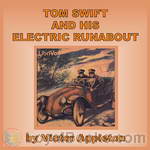 Tom Swift and his Electric Runabout
Tom Swift and his Electric Runabout
Tom Swift enters an upcoming race with his specially-designed prototype electric race car. But as he makes the final preparations and adjustments, days before the race, he discovers a plot that would bankrupt not only his family, but also everyone else that relies on the local bank (which is the target of a nefarious bank-run scheme). Tom must solve the mystery and stop the criminals behind the plot before he’ll test himself on a 500 mile race against some of the best electric cars and skilled drivers in the United States... | |
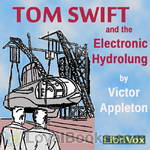 Tom Swift and the Electronic Hydrolung
Tom Swift and the Electronic Hydrolung
The US Government is very smartly letting Tom Swift Jr. handle the recovery of its probe to Jupiter. But a mystery missile suddenly intercepts the probe and splashes it in the South Atlantic.Faced with a huge search task to find the probe on the ocean bottom, Tom soon realizes that the same shadowy group that attacked the probe is competing to find it, and no holds are barred: kidnap, coercion, and lethal force are all in play.Under such circumstances, what can Tom do? What he does every time, of course! He invents some utterly cool device to get the job done! And his Electronic Hydrolung is just the beginning! | |
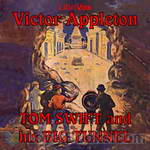 Tom Swift and His Big Tunnel
Tom Swift and His Big Tunnel
The Titus Brothers Contractors company have won a government contract in Peru to blast a tunnel through a mountain and connect two isolated railroad lines. The deadline is approaching, and the contractors have hit a literal wall: excessively hard rock which defies conventional blasting techniques. The company is under pressure to finish, or else the contract will default to their rivals, Blakeson & Grinder. Mr. Job Titus has heard of Tom Swift and Tom's giant cannon, which is used in protecting the Panama Canal, and wants to hire Tom to develop a special blasting powder to help them finish the excavation... | |
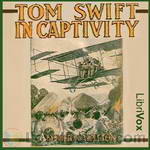 Tom Swift in Captivity
Tom Swift in Captivity
Tom Swift is approached by Mr. Preston, the owner of a circus, and begins to tell the story of Jake Poddington, Mr. Preston's most skilled hunter. As it turns out, Jake went missing just after sending word to Preston that Jake was on the trail of a tribe of giants, somewhere in South Africa. That was the last Preston has heard of Jake Poddington. Preston would like Tom to use one of his airships to search for Poddington, and if possible, bring back a giant for the circus.Listeners are forewarned that some elements and characters included in Tom Swift books portray certain ethnic groups in a very dated manner that modern readers, and listeners, may find offensive... | |
By: Immanuel Kant (1724-1804) | |
|---|---|
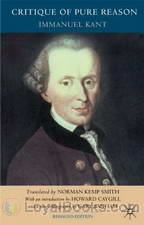 The Critique of Pure Reason
The Critique of Pure Reason
The Critique of Pure Reason, first published in 1781 with a second edition in 1787, has been called the most influential and important philosophical text of the modern age. Kant saw the Critique of Pure Reason as an attempt to bridge the gap between rationalism (there are significant ways in which our concepts and knowledge are gained independently of sense experience) and empiricism (sense experience is the ultimate source of all our concepts and knowledge) and, in particular, to counter the radical empiricism of David Hume (our beliefs are purely the result of accumulated habits, developed in response to accumulated sense experiences)... | |
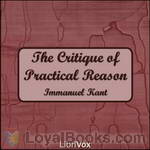 The Critique of Practical Reason
The Critique of Practical Reason
The Critique of Practical Reason (Kritik der praktischen Vernunft) is the second of Immanuel Kant’s three critiques, first published in 1788. It follows on from his Critique of Pure Reason and deals with his moral philosophy. The second Critique exercised a decisive influence over the subsequent development of the field of ethics and moral philosophy, becoming the principle reference point for ethical systems that focus on the rightness or wrongness of actions themselves, as opposed to the rightness or wrongness of the consequences of those actions... | |
 Perpetual Peace: A Philosophic Essay
Perpetual Peace: A Philosophic Essay
This essay, written in 1795, puts forth a plan for a lasting peace between nations and peoples. Kant puts forth necessary means to any peace, and argues that nations can be brought into federation with one another without loss of sovereignty. In one translation, telling of the historical impact of this essay, this federation is called a “league of nations.” The supplements and appendices are of considerable interest on their own. The supplements contain an argument regarding the use which nature makes of war, and the way in which nature, in the end, impels us towards peace... | |
 On the Popular Judgment: That may be Right in Theory, but does not Hold Good in the Praxis
On the Popular Judgment: That may be Right in Theory, but does not Hold Good in the Praxis
This tripartite essay, published variously as On the Popular Judgment (J. Richardson trans.), On the Old Saw (E.B. Ashton trans.), or On the Common Saying (both M.J. Gregor and H.B. Nisbet), Kant takes up the issue of the relation of theory to practice in three distinct ways. In the first, he replies to Christian Garve’s criticism of his moral theory, in the second, he distances himself from Thomas Hobbes, and in the third, Moses Mendelssohn. The three taken together are representative of the breadth of Kant’s moral and political thought; the first section being concerned with the individual, the second with the state, and the third with the species... | |
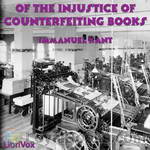 Of the Injustice of Counterfeiting Books
Of the Injustice of Counterfeiting Books
This essay of Kant’s on copyright argues that the unlicensed copying of books cannot possibly be permissible, due to the fact that it assumes a consent on the part of the author which it is logically impossible for the author to give. The argument is dependent upon an assumption that the writings be commodified, for the reason why the author is unable to possibly give consent to multiple publishers is due to the author’s will – to communicate with the public – necessitating the profitability of the publisher, for, it is assumed, there is no way to communicate with the public at large without a great expense which can only be borne by a publishing firm... | |
By: Jean Webster (1876-1916) | |
|---|---|
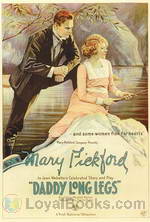 Daddy-Long-Legs
Daddy-Long-Legs
Jerusha Abbott, an eighteen year old orphan, faces an uncertain future in the charity home where she has lived all her life. On reaching adulthood, the orphanage can no longer offer shelter to its inmates. Her anxiety leads her into wild speculation when she is summoned to the matron's office. But a surprise awaits her. One of the visitors, a wealthy Trustee of the orphanage, has offered to fund Jerusha's college education and fulfill her dreams of becoming a writer. The only condition he makes is that he remain anonymous and that she write to him regularly about her progress... | |
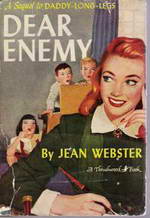 Dear Enemy
Dear Enemy
Dear Enemy is the sequel to Jean Webster’s novel Daddy-Long-Legs. The story as presented in a series of letters written by Sallie McBride, Judy Abbott’s college mate in Daddy-Long-Legs. Among the recipients of the letters are the president of the orphanage where Sallie is filling in until a new director can be installed, his wife (Judy Abbott of Daddy-Long-Legs), and the orphanage’s doctor (to whom Sallie addresses her letters: “Dear Enemy”). | |
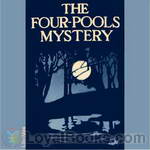 The Four-Pools Mystery
The Four-Pools Mystery
In The Four Pools Mystery the tyrannical plantation owner is deemed responsible for his own murder because of his mistreatment of the former slaves who continued in his employment after the war. Jean Webster (pseudonym for Alice Jane Chandler Webster) was born July 24, 1876 and died June 11, 1916. She was an American writer and author of many books including Daddy-Long-Legs and Dear Enemy. (Wiki) | |
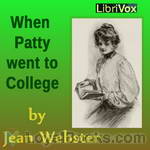 When Patty Went to College
When Patty Went to College
When Patty Went to College is Jean Webster's first novel, published in 1903. It is a humorous look at life in an all-girls college at the turn of the 20th century. Patty Wyatt, the protagonist of this story is a bright, fun loving, imperturbable girl who does not like to conform. The book describes her many escapades on campus during her senior year at college. Patty enjoys life on campus and uses her energies in playing pranks and for the entertainment of herself and her friends. An intelligent girl, she uses creative methods to study only as much as she feels necessary... | |
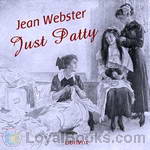 Just Patty
Just Patty
Patty, Conny, and Priscilla are the best of friends, and roommates at boarding school. While the teachers might say they are mischievous, even troublemakers, Patty and her friends act only in accordance with their convictions. From forming a labor union to furnishing a house for the neighbors, Patty's ideas are unconventional, yet loads of fun. Just Patty is the prequel to When Patty Went to College, the first novel by the author of Daddy-Long-Legs and Dear Enemy. | |
 Jerry
Jerry
Jerry is the humorous story of a young man's attempt to win his lady. Jerry is waiting for his friends at a hotel in Italy, and is bored and lonely. When he hears that a beautiful American lady, Constance Wilder, is staying nearby, he tries to visit her. After an awkward first meeting, he tries to catch her attention by pretending to be a peasant tour guide. She recognizes him for what he is, but pretends not to, and a lively charade is carried on as they tease and fall in love. A clean, sweet, funny historical fiction/romance. | |